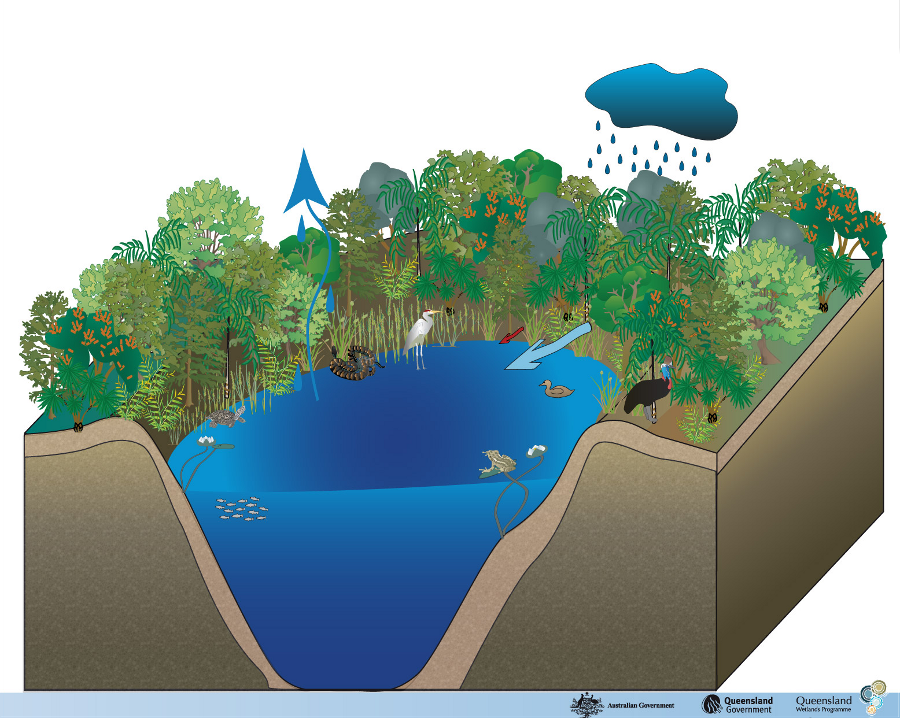|
|
Coastal and subcoastal non-floodplain rock lakeCoastal and subcoastal non-floodplain rock lake – Geomorphology Click on elements of the model or select from the tabs below Crater lakes form in volcanic craters some time after a volcano has become inactive. In Queensland they are predominantly formed in remnants of basaltic volcanoes. Generally water in crater lakes is fed from stream flow, run-off and floodout from the localised catchment within the crater rim or from underground springs. Craters can form as maars and calderas in a number of ways. For example, crater lakes may form where explosive volcanic eruptions produce wide craters (maars). Lake Eacham and Lake Barrine are examples of this type of crater lake formation. The inner walls are usually relatively steep and when the volcanoes become extinct, a lake may form. These are the most common form of crater lakes in Queensland. Calderas are formed where an empty chamber below the summit of a volcano collapses inward to form a large crater. Where the sides remain intact and the catchment of the crater rim is able to capture sufficient water, a lake or ponds may form. In the case of Coalstoun Lakes in south-east Queensland, crater lakes have formed in maars within calderas. Over time crater lakes may gradually fill with sediment and become relatively shallow swamps such as Bromfield Swamp in Far North Queensland. Last updated: 22 March 2013 This page should be cited as: Department of Environment, Science and Innovation, Queensland (2013) Coastal and subcoastal non-floodplain rock lake – Geomorphology, WetlandInfo website, accessed 8 May 2025. Available at: https://wetlandinfo.des.qld.gov.au/wetlands/ecology/aquatic-ecosystems-natural/lacustrine/non-floodplain-rock-lake/geomorphology.html |

 — Department of the Environment, Tourism, Science and Innovation
— Department of the Environment, Tourism, Science and Innovation

